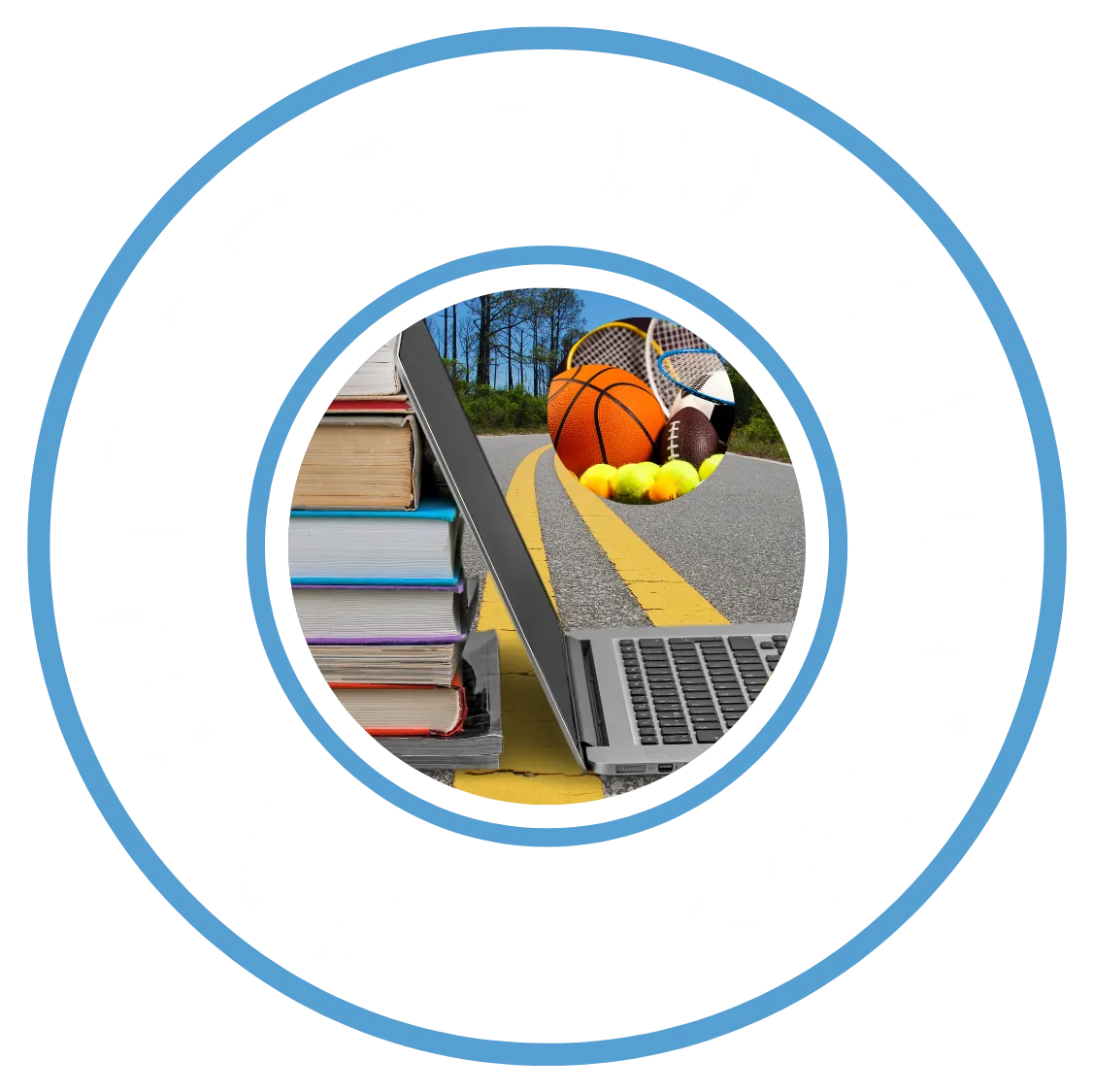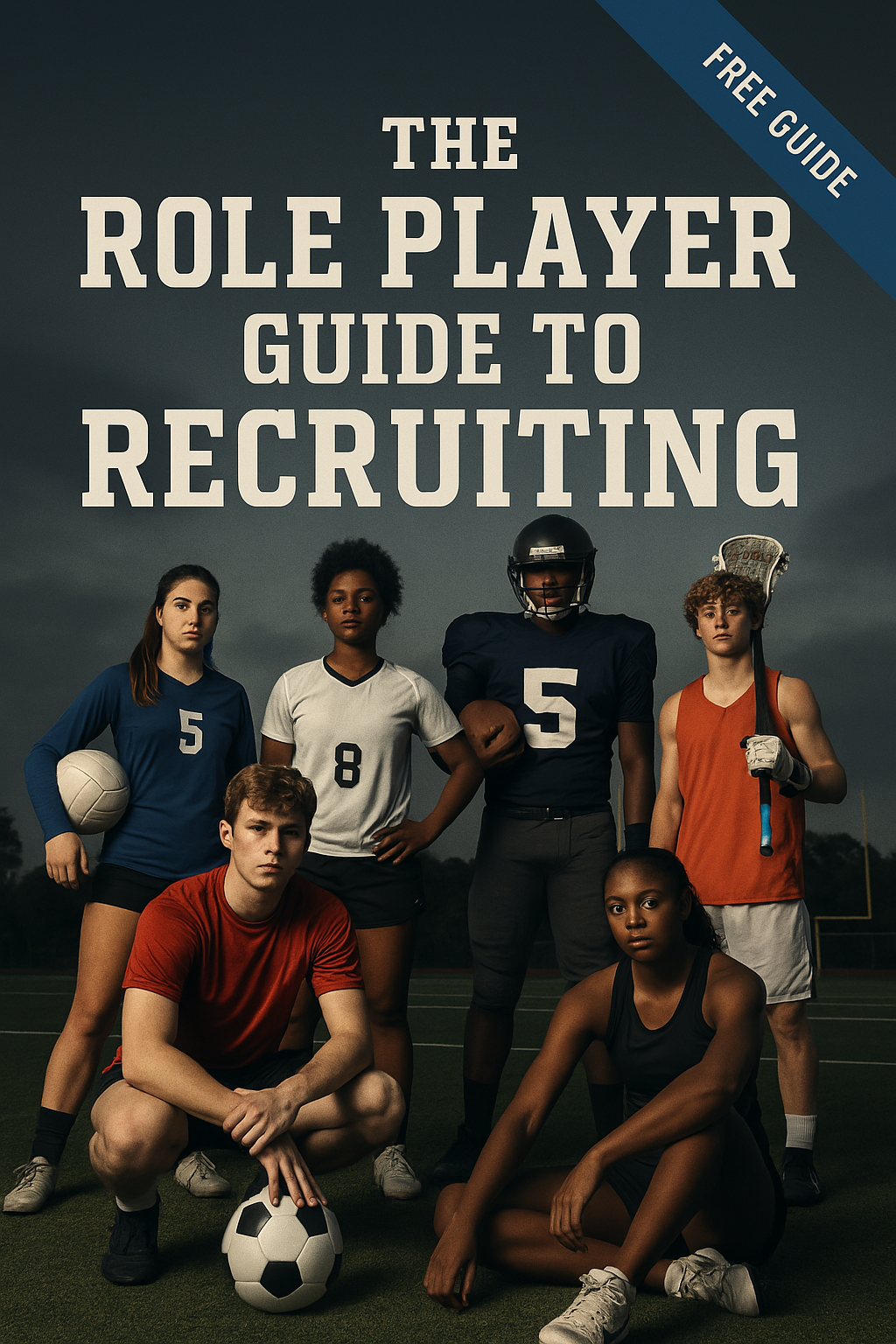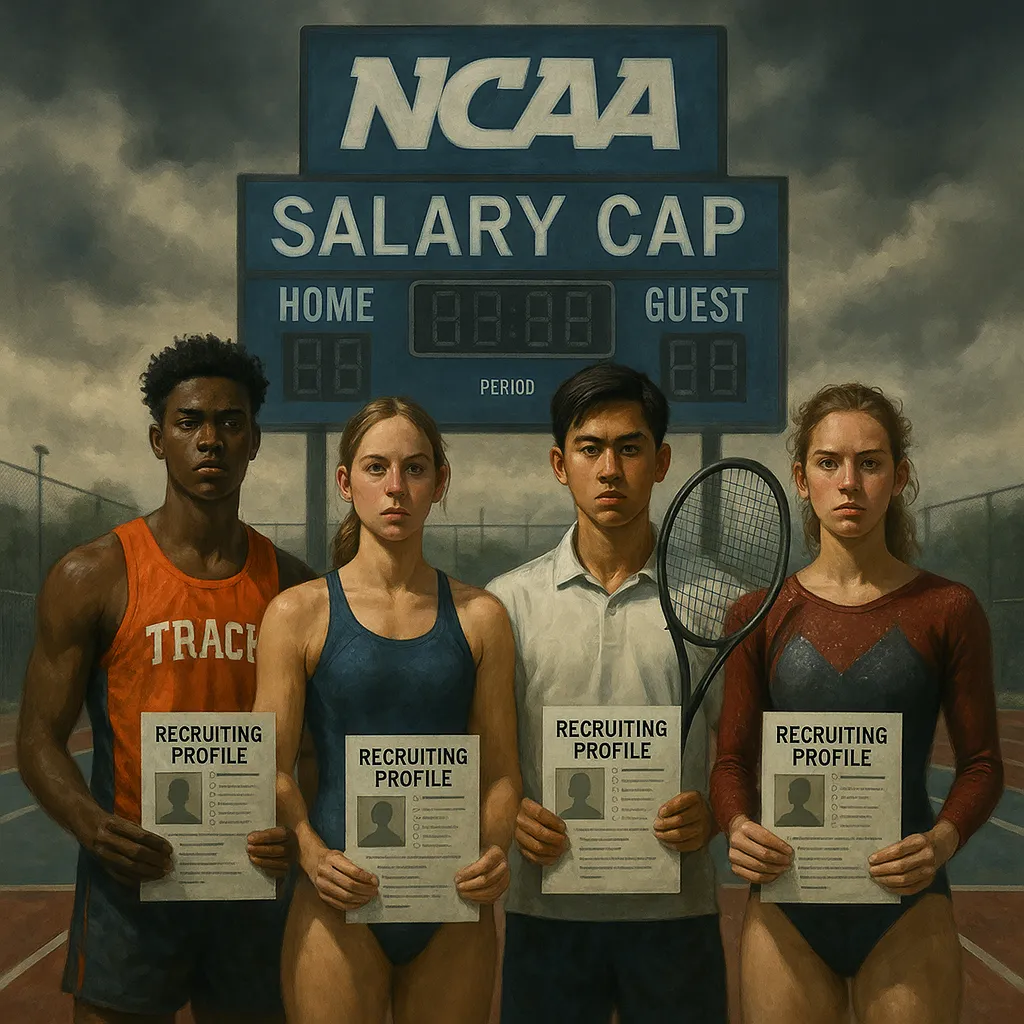

Your Success, Our Priority
Browse our articles below
Make sure to request our FREE Role Player Guide to Recruiting
WHILE SUPPLIES Last!!!
🏀⚽🏐🏈⚾🎾🏒🏊♂️🥍🎽 Free Download: The Role Player Guide to Recruiting
Not a star? Not a problem.
Whether you’re passing, blocking, digging, assisting, or just bringing relentless energy from the sidelines, this guide was created for athletes like you.
The recruiting world often highlights the MVPs and stat-sheet stuffers. Colleges also recruit role players, those who lead quietly, contribute consistently, and do what their team needs most.
This free guide gives you the tools to stand out and get recruited process started, no matter what sport you play.
🙌 This Guide Is Built For:
Athletes in basketball, soccer, volleyball, football, baseball, softball, lacrosse, track & field, cross country, tennis, hockey, wrestling, cheer, swimming, field hockey, and more. Defenders, passers, relays, utility players, blockers, reserves, bench leaders. Student-athletes who want to lead, even without the spotlight. Parents and coaches who want to support without burnout
💥 Why It Works:
Because colleges do not build teams with just stars, they build them with
contributors.
And many of the most successful college athletes were once role players who outworked the hype.

Here's what you get:

✅ How to stand out as a role player in any sport
✅ Tips for gaining exposure—even if you’re not the starter
✅ Scripts & strategies to communicate with college coaches
✅ Sport-adaptable advice and mental performance boosters
✅ A full action plan to move your recruiting process forward
By checking this box, I consent to receive both transactional and marketing communications from this organization. This includes messages related to my account, orders, appointment reminders, special offers, promotions, and other relevant updates. Message frequency may vary. Message and data rates may apply. Reply HELP for help or DELETE to opt out at any time.
Click the more stories button for additional articles

College Sports Salary Cap
College Sports Salary Cap Impact On Non-revenue Sports
The NCAA salary cap for college sports shifts funding toward revenue-generating sports, risking thousands of roster spots in non-revenue sports. Roster caps and budget changes leave student-athletes in Olympic and lesser-known sports facing more cuts, fewer scholarships, and increased recruiting uncertainty.
What Does the NCAA Salary Cap Mean for Non-revenue Sports?
The NCAA’s new salary cap framework allows schools to pay athletes directly, with most funding flowing to football and basketball programs. This shift brings roster caps that limit team sizes and may force athletic departments to cut non-revenue sports or reduce roster spots, especially for walk-ons and partial scholarship athletes. Non-revenue sports, which include track and field, swimming, gymnastics, and others, stand to lose the most as athletic funding becomes even more concentrated on revenue sports. Many schools must make tough decisions about which programs to keep, making it harder for student-athletes in Olympic and developmental sports to compete at the collegiate level.
The new policies also complicate compliance with Title IX, as schools balance scholarships and roster sizes to maintain gender equity. Often, the fastest way for athletic directors to remain compliant is to transfer scholarships from non-revenue sports to football or basketball, shrinking opportunities for athletes in those non-revenue programs.
Facilitate The Process can help student-athletes stay informed and proactive as these changes reshape recruiting. By using reliable recruiting software and building a strong student-athlete profile, families can navigate the shifting landscape and seek alternatives if their sport or roster spot is at risk.
How Do Roster Caps Affect College Athletic Recruiting?
Roster caps restrict the number of athletes a college team can carry, which directly affects recruiting. Coaches now face tighter limits on team sizes and must be more selective when offering roster spots. This change means:
Walk-ons and partial scholarship athletes may have fewer opportunities.
High school athletes in non-revenue sports could see reduced chances to compete at the collegiate level.
Transfers and returning athletes might be prioritized over incoming freshmen, causing a recruiting logjam.
A student-athlete profile becomes even more critical for standing out in a crowded recruiting field. Tools like Facilitate The Process can help athletes highlight their achievements and get noticed by coaches, even as roster spots become scarce.
Why Are Non-revenue Sports Most at Risk?
Non-revenue sports generate little to no income for college athletic departments but account for the majority of NCAA athletes. As the salary cap channels resources toward football and basketball, budgets for sports like cross country, tennis, and swimming shrink. Schools may cut teams or reduce scholarships in these sports to fund athlete compensation and remain financially viable.
This trend threatens the development pipeline for Team USA in Olympic sports, as collegiate programs have historically supplied most American Olympians. Losing these programs impacts both athletic and educational opportunities for student-athletes who rely on scholarships.
How Are Student-athletes Responding to These Changes?
Many student-athletes in non-revenue sports are left uncertain about their future. Some have lost roster spots or been cut from teams, while others must train independently and hope for a chance to rejoin. The lack of clear communication from athletic departments adds to the confusion, leaving athletes to seek information on their own.
Athletes who want to continue competing must stay proactive, seek legal guidance, or use recruiting software to find new opportunities. Connecting with coaches, building a comprehensive student-athlete profile, and leveraging platforms like Facilitate The Process can make a difference during this period of transition.
What Role Does the Court Play in the NCAA Settlement?
The federal court approved the settlement that established the salary cap and roster limits, aiming to address antitrust concerns and provide fair compensation to athletes. The court required schools to offer affected athletes a chance to play, even if they lost their roster spot due to these changes, for as long as they are eligible. However, there is no guarantee of regaining a spot, so competition remains fierce.
Ongoing litigation and Title IX challenges could still reshape how these rules are applied, but for now, schools and student-athletes must operate within the court-approved framework.
How Can Student-athletes and Parents Prepare?
Student-athletes and parents should take these steps to adapt to the new recruiting environment:
Start early with college athletic recruiting and focus on building a standout student-athlete profile.
Use recruiting software like Facilitate The Process to track opportunities and communicate with coaches.
Stay updated on roster caps and team cuts at target schools.
Have backup plans, including looking at different divisions or alternative sports.
Preparation and flexibility will facilitate the process and help families identify the best path forward as the college sports landscape continues to change.
What Is the Future for Olympic and Developmental Sports?
If current trends continue, many Olympic and developmental sports could be trimmed or cut from college athletic programs. This would limit the pipeline for future Olympians and reduce access to higher education for athletes who rely on these scholarships. Advocacy and legal efforts may yet protect some programs, but student-athletes should be aware of the risks and act accordingly.
Families and coaches can facilitate the process by staying informed, seeking new opportunities, and supporting efforts to maintain non-revenue sports within the NCAA structure.
How Does Facilitate The Process Support Student-athletes?
Facilitate The Process provides recruiting software, resources, and personalized guidance for student-athletes navigating college athletic recruiting. By creating a strong profile and tracking contacts with coaches, athletes can maximize their exposure even as roster spots become more limited.
The platform’s up-to-date information helps athletes and families stay ahead of changes and find new paths if their original plans are disrupted by salary cap and roster cap policies.
Game Plan Takeaway
The new NCAA salary cap and roster limits raise the stakes for non-revenue sports, making proactive recruiting, early planning, and adaptability more valuable than ever. Student-athletes who use tools like Facilitate The Process and focus on building strong profiles will have the best shot at finding and securing opportunities in this changing environment.
FAQs
How do roster caps affect walk-on athletes?
Roster caps restrict the number of athletes per team, so walk-ons are often the first to lose spots as coaches prioritize scholarship and revenue-generating athletes.
Will all schools follow the new NCAA salary cap rules?
Not all schools are required to participate in the new framework, but most Division I programs are expected to opt in to remain competitive in recruiting.
Can non-revenue sports be saved from cuts?
Legal challenges, alumni support, and advocacy may protect some non-revenue sports, but many programs face significant risk as budgets tighten.
What can high school athletes do if their sport is cut?
High school athletes should build strong profiles, use recruiting software, and look beyond Division I for opportunities in other divisions or schools that maintain their sport.
Where can families find reliable recruiting resources?
Families can use platforms like Facilitate The Process for up-to-date recruiting information, software, and support tailored to student-athletes.
Relevant SEO Keywords: NCAA, college athletic recruiting, recruiting software, student-athlete profile, facilitate the process, court, salary cap, non-revenue sports, roster caps, Olympic sports, college sports recruiting
Resources & Community
🎯
Follow Facilitate The Process on Facebook
https://www.facebook.com/facilitatetheprocess/
🌐
Join Our Recruiting Community
🔗
Get Started Today

